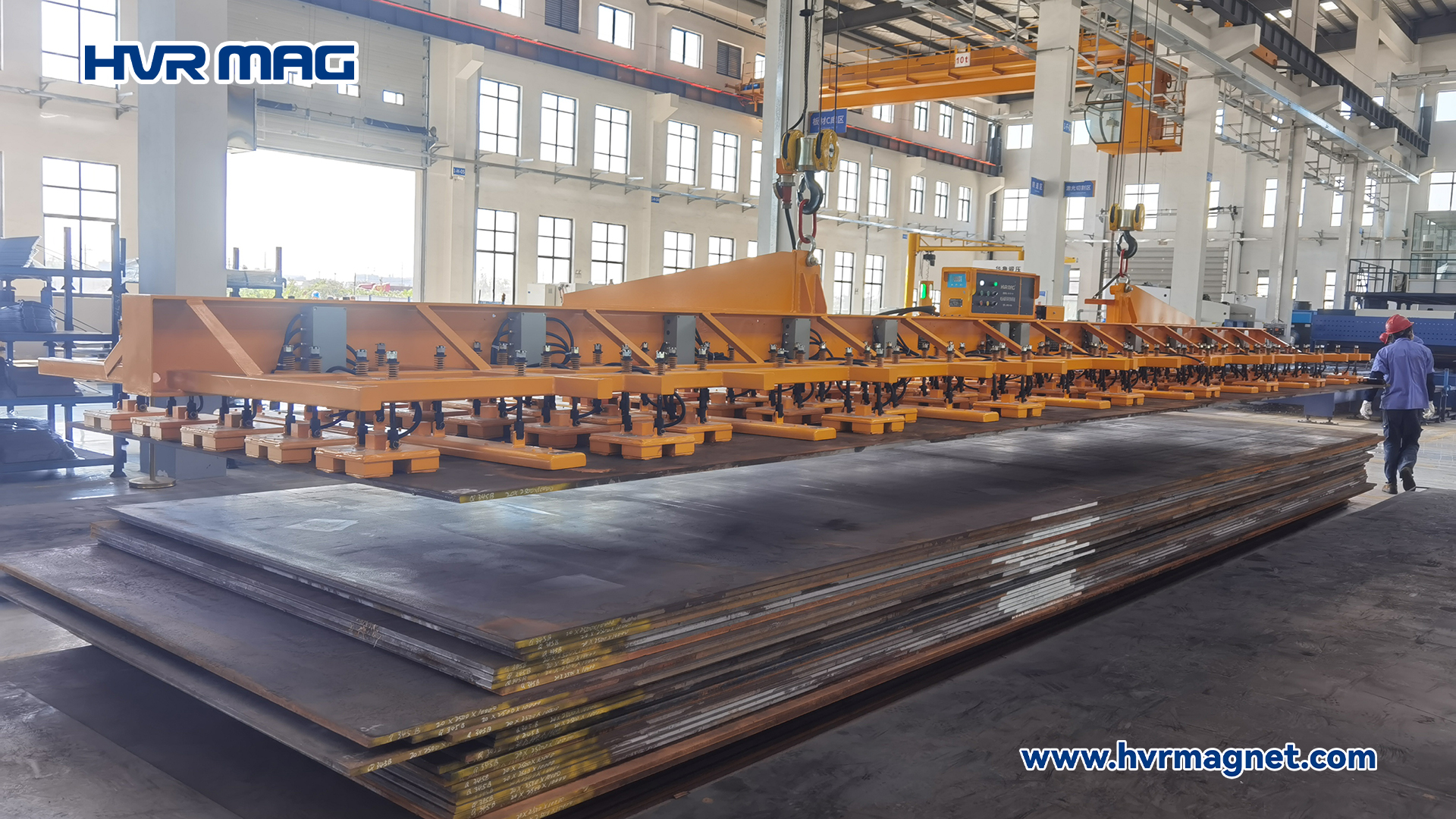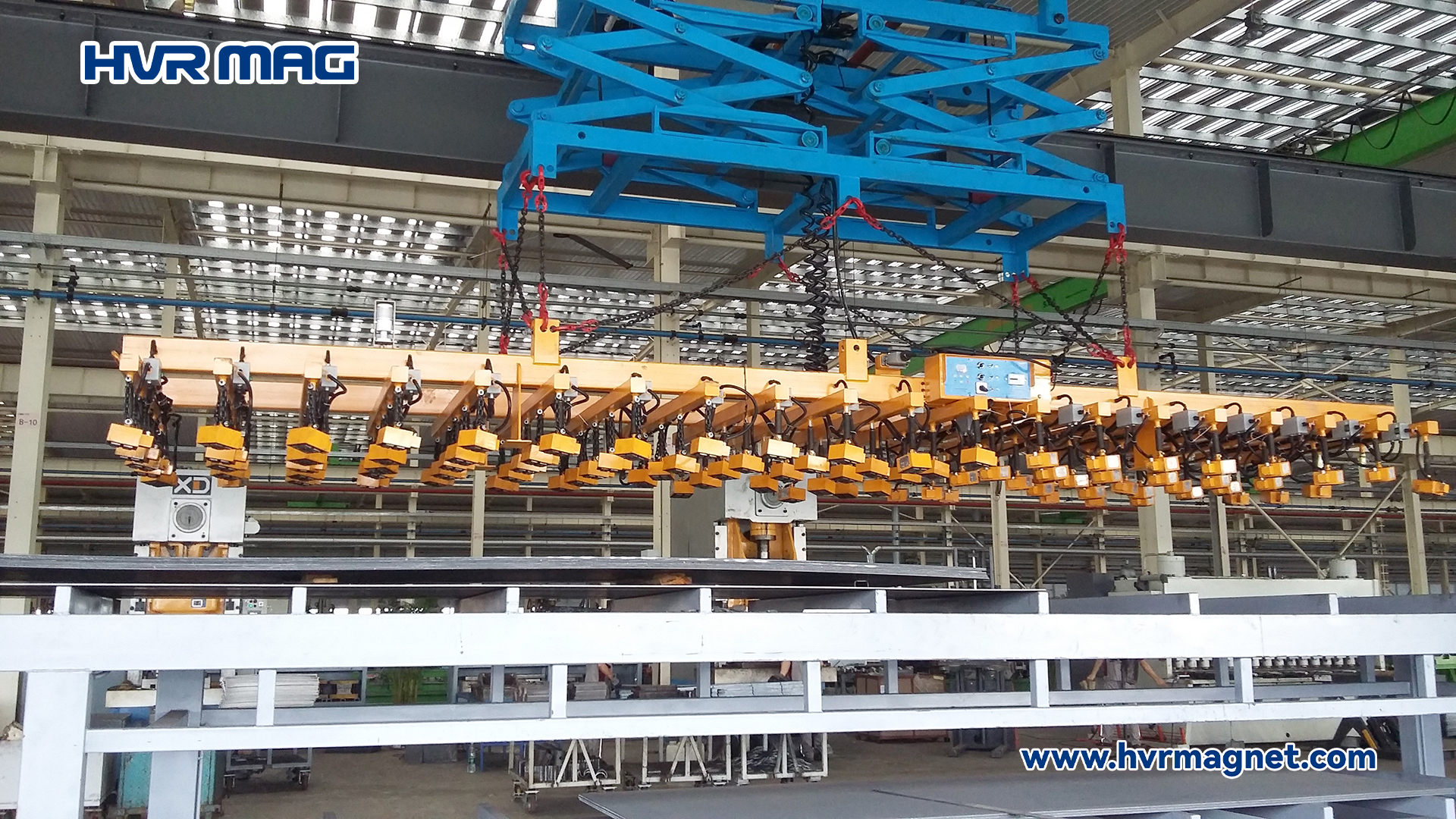In industrial settings, efficiently loading steel plates onto cutting machines is critical for maintaining production flow and ensuring high-quality cuts. Various lifting devices are available for this purpose, including hooks, plate clamps, permanent magnets, electromagnetic lifters, and electro-permanent magnets. This article explores the strengths and weaknesses of each device to determine the best choice for loading steel plates onto cutting machines.
Hooks and plate clamps are among the most basic and cost-effective lifting tools. They are inexpensive and considered consumables with a relatively short service life, often requiring frequent replacement. Additionally, these tools can be cumbersome to use, usually necessitating the coordination of multiple operators. The time taken to lift a single steel plate can be quite long, impacting cutting efficiency. Moreover, locating the center of gravity of the plate during lifting can be challenging, increasing the risk of accidents such as tipping and dropping. Steel plates are often stored with wooden blocks underneath, which can deform the plates over time, leading to additional costs.
Permanent magnets offer better safety and ease of use compared to hooks and clamps. However, they come with notable drawbacks. Permanent magnets have a deep magnetic penetration, making it difficult to control precisely. When lifting thin plates, there is a tendency for the magnet to attract multiple plates simultaneously. This can lead to issues with securing the plates properly, creating significant safety hazards. Furthermore, permanent magnets cannot be used to handle a variety of plate sizes effectively, and adjustments for deformed plates require specialized expertise, which can delay production.
Electromagnetic lifters provide advanced control options, including integrated and remote control capabilities. However, their heavier construction increases the cost of the associated overhead crane system. Electromagnetic lifters require a continuous power supply to maintain the magnetic field; if power is lost, the magnets immediately demagnetize, posing a risk of dropped plates. To mitigate this, additional investment in power outage protection devices is necessary, which can increase maintenance costs. Although electromagnetic lifters offer better control than permanent magnets, they still suffer from issues with magnetic penetration, which can cause thin plates to stick together.
1. Hooks and Plate Clamps
2. Permanent Magnets
3. Electromagnetic Lifters


Based on the analysis above, electro-permanent magnets are the optimal choice for loading steel plates onto cutting machines. They excel in safety, precision, and cost-effectiveness. Despite the higher initial investment, the enhanced operational efficiency and reduction in losses they provide contribute to significant improvements in overall production performance and lower long-term operational costs.
Work directly with our experienced team to solve your toughest engineering challenges